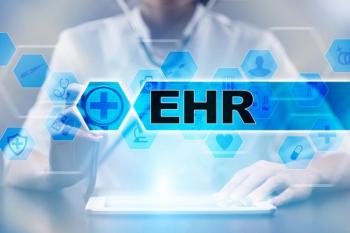
Striving for interoperability during the pandemic
How data-driven, person-centric care can help us through the end of the COVID-19 crisis.
Change has been a constant for the healthcare sector the majority of this year. The industry at large has been navigating the uncharted waters of the coronavirus pandemic, practices have quickly pivoted to telehealth and remote patient monitoring (RPM) to care for patients and minimize spread of the disease, and providers have had to keep up with evolving treatment protocols, while researchers race to develop a new vaccine.
On the heels of flu season, which could cause even more demand for healthcare services, providers also have been preparing for the impending deadline to comply with
Delivering data-driven, person-centric care
In addressing anti-competitive behaviors and information-blocking practices—which have been all too common—the Final Rule encourages a level of collaboration and seamless information sharing across the industry that is vital as the industry continues the fight against COVID-19, manages the distribution of coronavirus vaccines once available, and supports delivery of data-driven, person-centric care long into the future.
Furthermore, the need for interoperable technology is crucial, yet for so long it has not been broadly available. In their daily lives, individuals are accustomed to using computers and smartphones for everything from booking a vacation rental to banking online, with data shared through application programming interfaces (APIs) using privacy and security protocols. Accessing electronic health data is not nearly as easy for either patients or providers since many systems do not speak to one another and the data has not been standardized. It’s been a long road, but that is all changing with broad adoption of FHIR APIs and enforcement of the Final Rule.
"It is time to change that paradigm," said
Putting patients at the center of care is key to moving the U.S. healthcare system to a value-based approach. Interoperability is an essential component of this work because health systems can bridge from population health outcomes down to clinical decision-making at the point of care. Tremendous work is currently underway on
As our country enters the tenth month of COVID-19 and newly adopted activities such as remote patient monitoring and telemedicine appear to be here to stay, there’s even more pressure to integrate such work into everyday clinical workflows. The current health crisis has accelerated the virtualization of care by up to five years and most believe this progress will not be undone following the pandemic.
Broad adoption of interoperability rules will allow integrated workflows and integrated data sets, which will drive positive outcomes. For example, healthcare providers and public health officials have not traditionally used the same information systems, data formats, or standards, making it difficult to share clinical data to public health officials in efficient and automated ways. API-based interoperability will streamline the effectiveness of data sharing—from trends in symptoms and recovery times, to mortality rates, treatment efficacy, and distribution of vaccines. Interoperability will also enable healthcare providers to better triage by staying abreast of standards of screening, care and prevention.
How interoperability can move us past this pandemic faster
In the past weeks, we’ve seen impressive results from several ongoing SARS-CoV-2 vaccine trials. Distribution of these vaccines once approved will be one of the greatest public health campaigns of our generation.
Speaking to the American Medical Informatics Association annual symposium in mid-November, Dr. Anthony Fauci, the U.S. top infectious disease expert, underscored the importance data and interoperability in the context of vaccine development, production, and distribution. "We need to continue to be very open about encouraging – in fact, almost even mandating – data sharing as part of our research contract with our grantees and contractors," said Fauci. "The data now are so voluminous that they need to not only be shared, but shared in a way that people can utilize them."
Interoperability has a role to play here as well—whether managing inventory and distribution, identification of priority groups for the initial batch of vaccinations, post-market surveillance and reporting of side effects, or compliance with the two-dose regimen. Since not everyone has electronic health records, Fauci noted that vaccine registries could be a valuable public health tool to ensure that systems can track who has gotten a vaccine, and, if there are competing ones available, which vaccine patients received. Data tracking and data sharing will be at the core of this endeavor, so the Final Rule deadline could not have come at a better time.
Patients will have more access to information regarding their health, enabling them to be more proactive in their own care plans and ultimately improving health outcomes. And with access to a full range of data, providers will be able to deliver more informed care, streamline their workflows and receive greater insights into trends that will further support effective delivery of value-based care.
About the Author
Newsletter
Optimize your practice with the Physicians Practice newsletter, offering management pearls, leadership tips, and business strategies tailored for practice administrators and physicians of any specialty.










